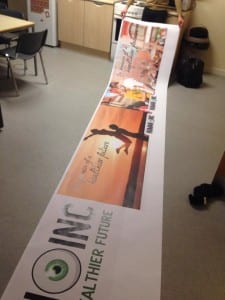I’ve been thinking a lot about what I can contribute to this group project that would be beneficial to our final piece. I am not particularly gifted with media or aesthetic design but where the science behind our ideas is involved I can do a lot. As such it has fallen to me to find some scientific reasoning to back up our products.
We came up with a long list of potential products our company could produce, anti-aging skin cream, changing eye colour, memory enhancement chips, patches that would remove scar tissue, among other products. We decided that due to time and financial constraints we would only market 2 or 3 products. The first would be an anti-aging skin cream called “Reverse”. The aim is to reduce the signs of aging for an efficiently longer period of time than regular skin creams using: Hydroxyl and Hyaluronic acids to exfoliate the skin and absorb moisture (allowing the skin to plump up to avoid wrinkles), Pentapeptides and Retinol to encourage the body to produce more collagens which protect against signs of aging ( retinol is one of the best ingredients for reducing fine lines, plumping your skin, and decreasing pore size” (Beautylish, 2012). With added Vitamin C which acts as a protective layer and guards against harmful bacteria and UV rays. We agreed that moisturising ingredients such as Aloe Vera could also be added for a fresh and smooth finish.
Reverse is a product we will be telling potential buyers is “under development” and will ask our audience questions regarding their interest in the product accordingly. We will have samples of the product on display to add to the aesthetics and reliability of our company.
The second product we will advertise is something we have called “Bliss”. Essentially it is a bottled adrenaline rush. One of our very first ideas was to sell bottled emotions; this is an extension of that initial idea. An adrenaline rush is caused by the release of endorphins in the body as a result of excitement, sexual intercourse, food consumption and other similar activities “with high endorphin levels, we feel less pain and fewer negative effects of stress” (MedicineNet, 2007). The theory behind Bliss is to create an endorphin rush using a chemical reaction as opposed to forcing one through outside stimulus. It contains N-Acetyl Cysteine and magnesium sulphate which act as receptor switches (they tell your brain to go from feeling sad to feeling happy) and Guarana which contains natural caffeine to boost the heart rate. The special ingredient is something called Forskolin which actually forces the body to rapidly produce endorphins into your system, “forskolin (“Endorphin Enhancers”) that increase endorphin levels” (Pondera 2014). With this the chemical balance is complete and an endorphin rush is triggered which can last up to 4 hours depending on the individuals size and mass.
During our instalment we will offer small bottles of Bliss to each audience member as a free give away and a thank you for complying with our questionnaire. In reality the bottle will only contain water so it will be perfectly safe to drink or to store for decorative purposes. The main point of Bliss is to have some form of give away for our audience so that they will remember us and to reinforce our reliability as a company.
With this bank of knowledge as a base for our script I feel confident that we can come across as a professional company.
Medicine net (2007) Endorphins: Natural Pain and stress fighters [online] Available from http://www.medicinenet.com/script/main/art.asp?articlekey=55001 [Accessed 3 May 2014]
Pondera Pharmaceuticals (2014) Why Endorphinate? [online] Available from http://ponderapharma.com/why-endorphinate/ [Accessed 3 May 2014]
Beautylish (2012) What is Retinol? [online] Available from http://www.beautylish.com/a/vciwa/what-is-retinol [Accessed 3 May 2014]




